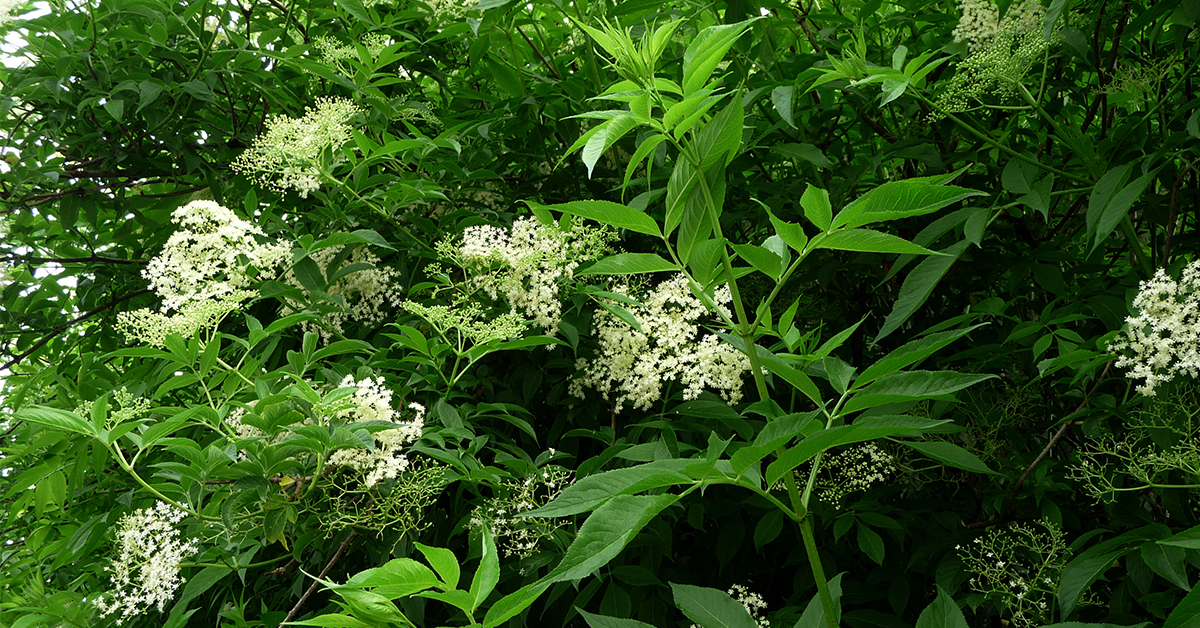Archives
The elder (intsusa) is one of the most cited plants in the writings on traditional medicine in Europe. It is deciduous shrub that can reach a height of between two and seven metres, and whose botanical name is Sanbucus nigra.
The elder has a strong and rather unpleasant smell, and has a trait that is rather unusual in the plant kingdom: its branches have a creamy-white pithy tissue that can removed relatively easily. That leaves a hollow pipe that can be used for different purposes: blowpipes as weapons or to start and stoke fires, a bong or pipe for smoking, or as a flute or whistle. Until relatively recently, youngsters would enjoy making and playing the musical instrument; they would remove the pith from the elder branch, make a hold on the side and cover the other one using cigarette rolling paper. This small flute is known as flota in Elosua (Gipuzkoa) and tulurte in the Larraun Valley (Navarra).

Zantiratua ritual in Zeanuri (Bizkaia), c. 1915. Felipe Manterola Collection. Labayru Fundazioa Photographic Archive.
In Gernika (Bizkaia) and environs a sprain or strain, typically in the ankle, is known as zantiratua, from zan ‘vein, nerve, tendon, ligament’ and tiratu ‘pull, stretch’. Other denominations such as bihortua or trokatua are likewise common to refer to a sprained foot, thus differing it from a dislocation, in which case the bone is said to ‘come out of the joint’, hazurrak urten.
Menstruating women were believed to be prone to sprains and strains, so it was not uncommon that they would wrap their ankles. And conversely, wrapped ankles were generally interpreted as a precaution during the menstrual period. (more…)



